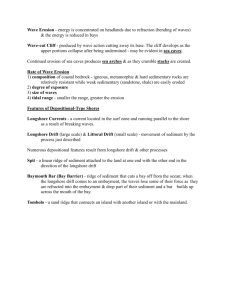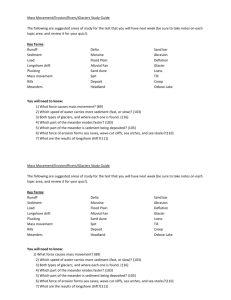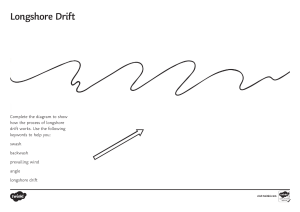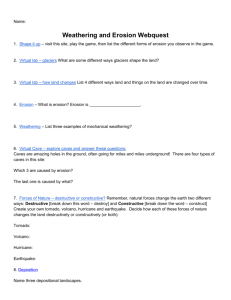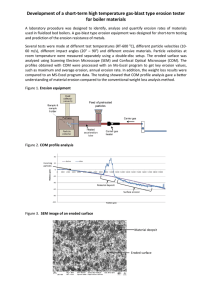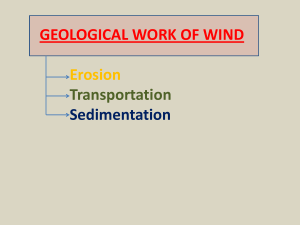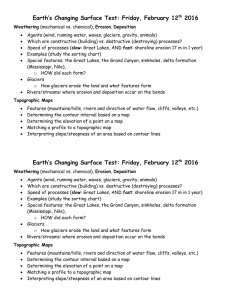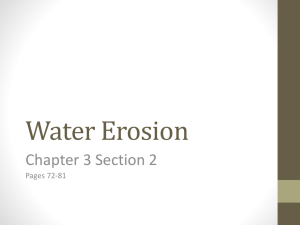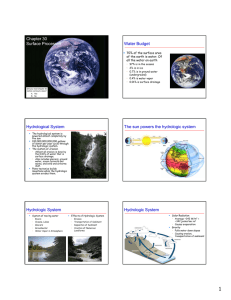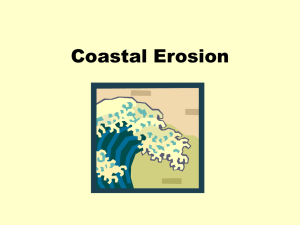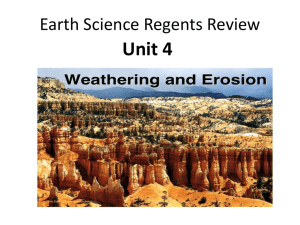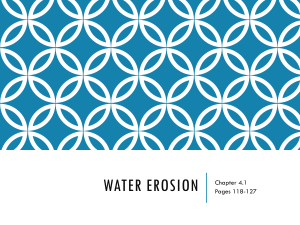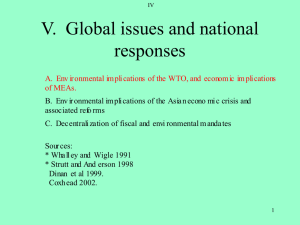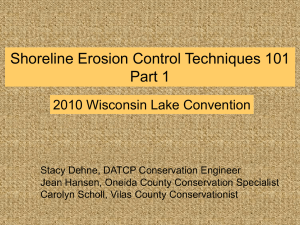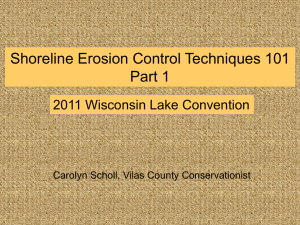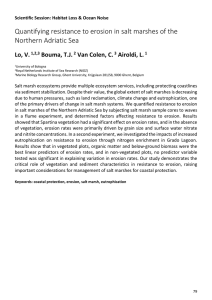Name: Date: Period:______ Chapter 3 Review Define the following
advertisement
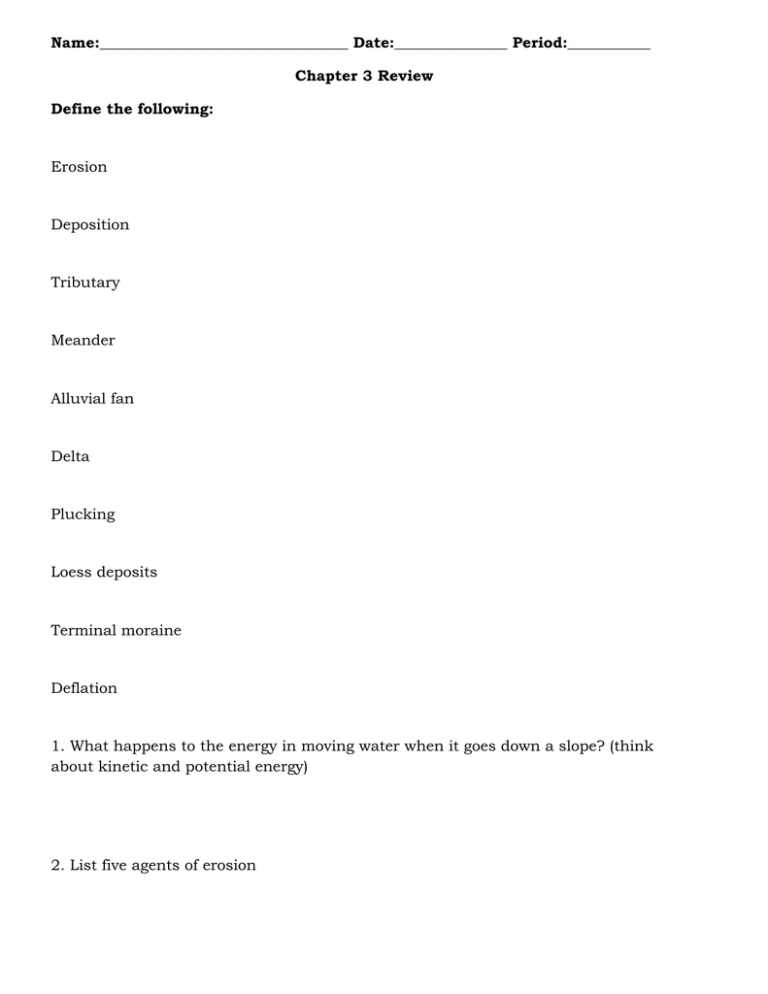
Name:_________________________________ Date:_______________ Period:___________ Chapter 3 Review Define the following: Erosion Deposition Tributary Meander Alluvial fan Delta Plucking Loess deposits Terminal moraine Deflation 1. What happens to the energy in moving water when it goes down a slope? (think about kinetic and potential energy) 2. List five agents of erosion 3. What causes most sediment to wash or fall into a river? 4. What happens to the speed of a river when more water flows through it? 5. What causes mass movement? 6. List the four types of mass movements 7. What are the five main factors that can increase runoff? 8. What kind of rock is found where there is karst topography? 9. Which agents of erosion can cause abrasion? 10. What is a delta and how does it form? 11. What is an oxbow lake and how does it form? 12. What are the two types of glaciers? What is the main difference between the two? 13. When do glaciers form? 14. What type of valley (U or V shaped) will you find in a river? Glacier? 15. What is longshore drift? 16. Where does the energy in ocean waves come from? 17. What kind of motion do the water particles have as the energy of a wave moves through the water? 18. Where a coastling turns and interrupts longshore drift, sand may be deposited in a fingerlike landform called what? 19. What is a sea stack and how does it form? 20. What is a beach and how does it form? 21. Which is the weakest agent of erosion? 22. What types of areas are subject to erosion by wind? Why? 23. Are areas with loess deposits valuable? Why or why not?



